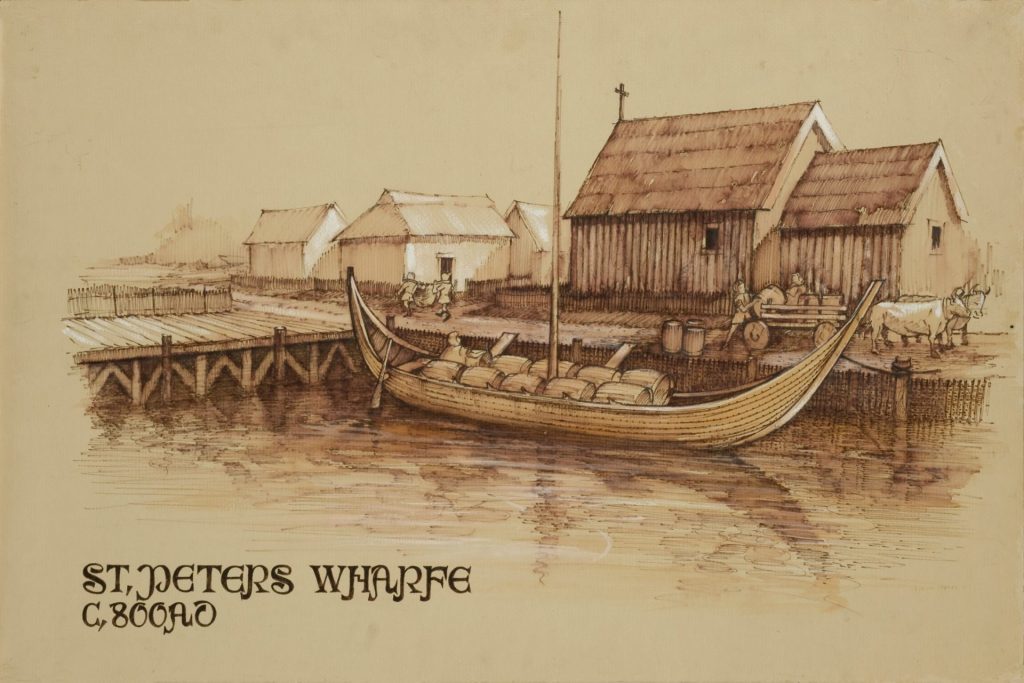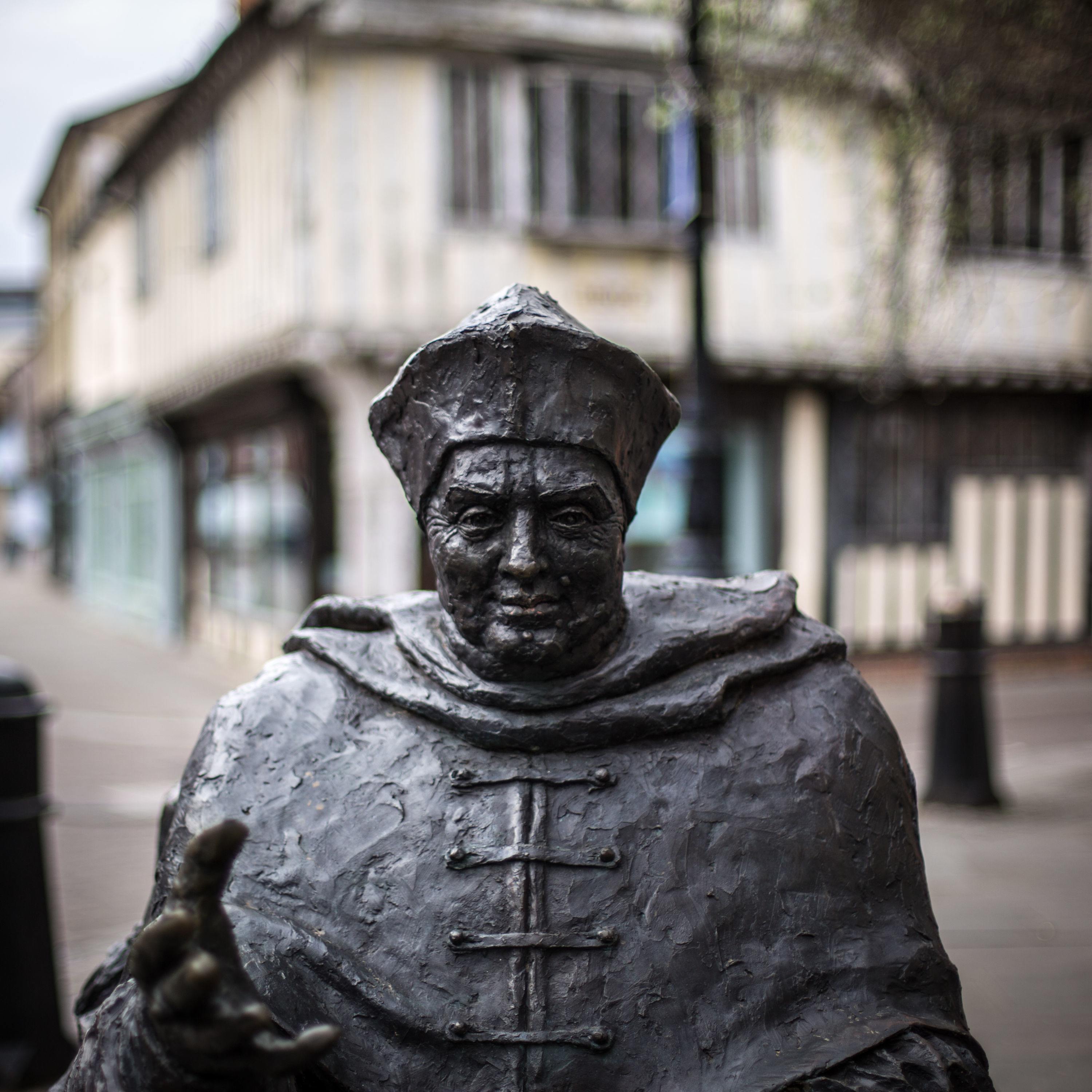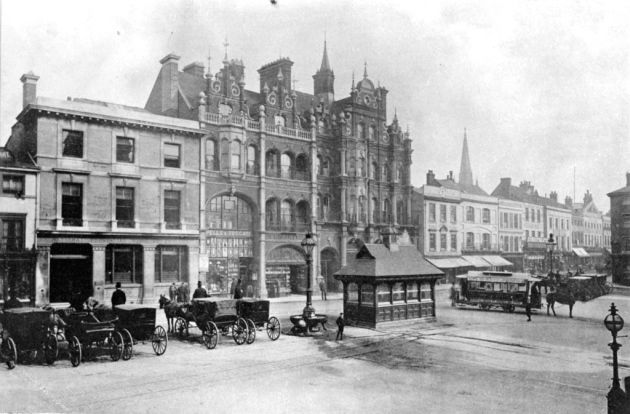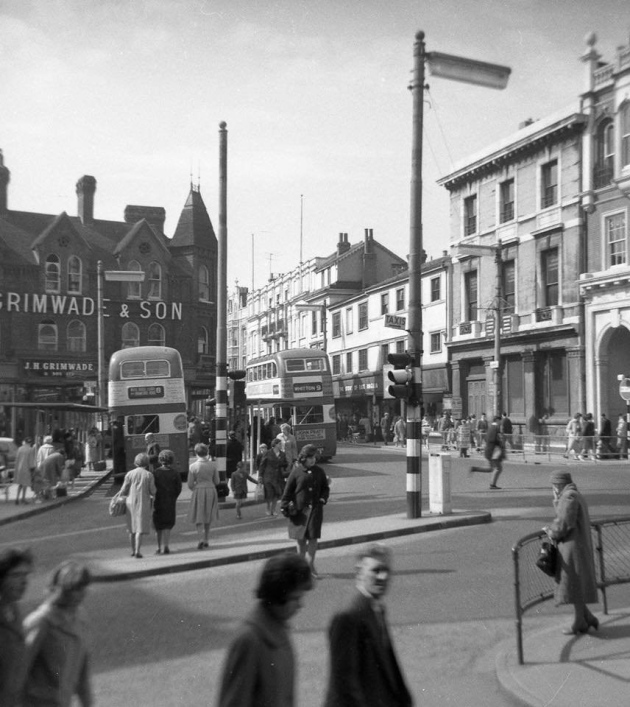A Timeline of the History of Ipswich
POSTED ON: 24/08/2020
The oldest town in England
Ipswich has a fascinating history spanning three millennia and nearly 1,500 years; with Anglo-Saxons, Vikings, Kings, Queens, invasions, emigrations, refugees, war and trade.
Remnants of many of these moments in the history of Ipswich can still be found throughout the town; hidden gems that offer a window into the past. You can visit historic churches such as St Mary-le-Tower and St Peter's by the Waterfront, explore the collections at Ipswich Museum and Christchurch Mansion, follow the Blue Plaque trail or simply wander the ancient streets.
Read through this timeline to get a brief history of Ipswich and it's people:
Medieval Ipswich

600s - The port of 'Gippeswic' (old-English form of Ipswich) is founded with a small trading settlement during the Anglo-Saxon times, after the collapse of the Roman Empire. The name 'Gippeswic' comes from the name of the river, Gipping, and the Anglo-Saxon word wic meaning 'dwelling-place'.
700 - Frisian potters from the Netherlands emigrate to Ipswich and established the first potteries in England since the Roman period.
720 - As the town prospers through maritime trade with Europe, the town extends north from the river into the area which is now the Buttermarket and Arras Square.
869 - Ipswich is invaded by Vikings and falls under Dane rule.
917 - Ipswich is recaptured by the Anglo-Saxons after nearly 50 years of Viking occupation.
1086 - Ipswich has a population of around 2,000.
1177 - An Augustinian Priory is built further north, on the site that is now Christchurch Mansion. A Holy Trinity Priory, which became St Mary-le-Tower, was also founded around this time.
1200 - King John grants Ipswich it's first Charter; a document granting rights to the people and laying the foundations for civil government. The town begins to flourish as it exports cloth and wool across Europe via the port. Much of the wool came from villages such as Lavenham and Long Melford which, to this day, are known as Suffolk's "Wool Towns".
1340 - Ipswich population grows to about 3,000.
1380 - Geoffrey Chaucer writes about Ipswich merchants in The Canterbury Tales. Chaucer's family came from Ipswich, probably the Kesgrave area, and became successful wine-traders, aka "vintners".
1473 - Thomas Wolsey, future cardinal to King Henry VIII, is born in Ipswich and is the son of a Butcher; which later became a point of criticism and ridicule throughout his career within Court.
Renaissance Ipswich

1528 - St Mary's School is founded
1548 - The Augustinian Priory is demolished as part of King Henry VIII's 'Dissolution of the Monasteries' (his separation from the Roman Catholic Church). Edmund Withypoll, a prominent local merchant, politician and sheriff, begins construction of Christchurch Mansion on the Priory site.
1579 - Queen Elizabeth I visits Ipswich as part of her unifying tour of the Kingdom.
1600 - Ipswich has a population of approximately 4,000. The cloth and wool trade takes a rapid decline as imported fabrics from China and India become fashionable.
1620s - Huguenot refugees, French Protestants persecuted by King Louis XIV, emigrate and settle in Ipswich. Around 50,000 of the French citizens from Normandy and Poitou escaped to England and are noted as England's first refugees.
1630s - Large numbers of the Ipswich population emigrate to the newly founded Americas, establishing Ipswich in Essex County, Massachusetts.
1665 - The Great Plague reaches Ipswich after a ship from Rotterdam brings the infection to Great Yarmouth. The spread of the infection was slow yet deadly in Ipswich, and town authorities refused to recognise the plague had arrived.
1680 - Ipswich has a population of about 7,500.
1720 - The town's first newspaper is produced; The Ipswich Journal. The paper was in press for nearly 200 years.
19th Century Ipswich

1800 - Ipswich has a population of about 11,000. The port booms as shipbuilding, leather, malting and brewing industries flourish.
1818 - Gas lighting is introduced across the town.
1835 - Charles Dickens stays in Ipswich and uses the town as a setting for scenes in his novel The Pickwick Papers.
1851 - The population of Ipswich begins to grow quickly, reaching around 33,000; tripling in just 50 years.
1868 - The Town Hall is built.
1880s - The first sewers are dug in Ipswich. Horse-drawn trams are introduced to transport workers and the public into the town centre from the surrounding suburbs.
1881 - Ipswich Museum opens; built to educate the working classes (who couldn't afford education or had to leave education for work), in natural sciences including natural history, archaeology, geology and ethnology. The Museum held revolutionary debates about Charles Darwin's theory of evolution, written in The Origins of Species.
1885 - The Ipswich Star newspaper begins publications.
1895 - Christchurch Park opens to the public. Local merchant and brewer Felix Cobbold buys the park from the Fonnereau family (naming the adjacent Fonnereau Road) and gifts it to the towns people; providing a free outdoor space available for everyone.
20th Century Ipswich

1901 - Ipswich has a population of about 66,000.
1903 - Electric trams and Trolleybuses are introduced to replace the horse-drawn trams.
1915 - A German Zeppelin raid during World War 1 kills one man in Ipswich.
1926 - After just 23 years, the electric trams cease operation.
1929 - Ipswich Regent Theatre opens as a 'cine-variety hall' and is one of the UK's first venues to play films with sound that were known as 'talking pictures' and 'talkies'.
1945 - A German bombing raid during World War 2 devastates the town docks, killing 9 people and destroying 6 houses.
1965 - The Ipswich Transport Museum opens; housing collections of the disused trams and trolleybuses along with old Ipswich buses, fire engines and vehicles.
1971 - Ipswich has a population of about 123,000.
1974 - The Willis Building is designed and built by Sir Norman Foster and becomes the youngest grade 1 listed building in the UK.
1982 - The Orwell Bridge is built. At the time, the bridge was one of the longest bridges in the UK.
1986 - Tower Ramparts Shopping Centre opens; now Sailmakers Shopping Centre.
1992 - The Buttermarket Shopping Centre opens.
1993 - Ipswich is twinned with Arras, France and lends it's name to the area outside the Buttermarket Centre; Arras Square.
Sources: Britain Express, Colchester & Ipswich Museums, The History Files, Ipswich Borough Council, Ipswich Maritime Trust, Ipswich Society, Local Histories, Medieval English Towns
POPULAR POSTS
Salthouse's Chocolate Brownie
A scrumptious brownie recipe from the Salthouse Harbour Hotel's Head Chef. "This is
READ MORE5 Ways To Enjoy The River Orwell
Rediscover the lifeblood of Ipswich. A unique fact about the River Orwell is that the people of
READ MOREA Timeline of the History of Ipswich
The oldest town in England Ipswich has a fascinating history spanning three millennia and nearly
READ MORE